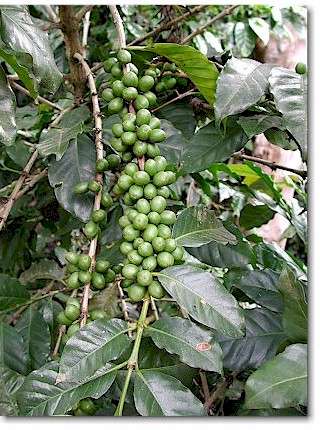New Guinea is the second largest island in the world. The Indonesian half of the island was formerly called “Irian Jaya”. Today, it is known as Papua, and it is divided into two provinces – Papua and West Papua. The eastern half of New Guinea is the independent country of Papua New Guinea.
There are two main coffee growing areas in Papua The first is the Baliem Valley, in the central highlands of the Jayawijaya region, surrounding the town of Wamena. The second is the Kamu Valley in the Nabire Region, at the eastern edge of the central highlands, surrounding the town of Moanemani. Both areas lie at altitudes between 1,400 and 2000 meters, creating ideal conditions for Arabica production.
Together, these areas currently produce about 230 tons of coffee per year. This is set to rise, as new companies are setting up buying and processing operations. These companies are assisting farmers to obtain organic and fair trade certification, which will significantly improve incomes. The area is extremely remote, with most coffee growing areas inaccessible by road and nearly untouched by the modern world.
All coffee is shade grown, in a stunning natural environment that is home to the Bird of Paradise and uncounted other species. The main tree species found in coffee production areas are Kaliandara, Erytrhina and Abizia. The tropical forests of Papua are among the most bio-diverse habitats on earth.
Farmer in Papua using a semi washed process. After pulping, the coffee is fermented for 8 to 10 hours. Then the mucilage is washed away and the beans are then dried to 12% moisture or wet hulled and dried as green Bean. Since modern technology slowly emerges, most of this Coffee is processed entirely by hand. Chemical fertilizer pesticide and herbicide are unknown in this origin, which makes this coffee both rare and valuable. For more information, visit www.papuanspecialtycoffees.com
SCAI exporter and contact | Production area | Name and cup profile | Certification | Crop cycle |
Baliem Arabica cooperative | Baliem Valley | Heavy body with low acidity. Chocolate with tobacco notes. | Organic | May to September |
WHAT'S YOUR COFFEE IQ?
Whether you are a coffee consumer or a coffee professional, Coffee Universe quizzes are a fun way to learn more about your favorite beverage.
http://coffeeuniverse.com/quiz/coffee



















